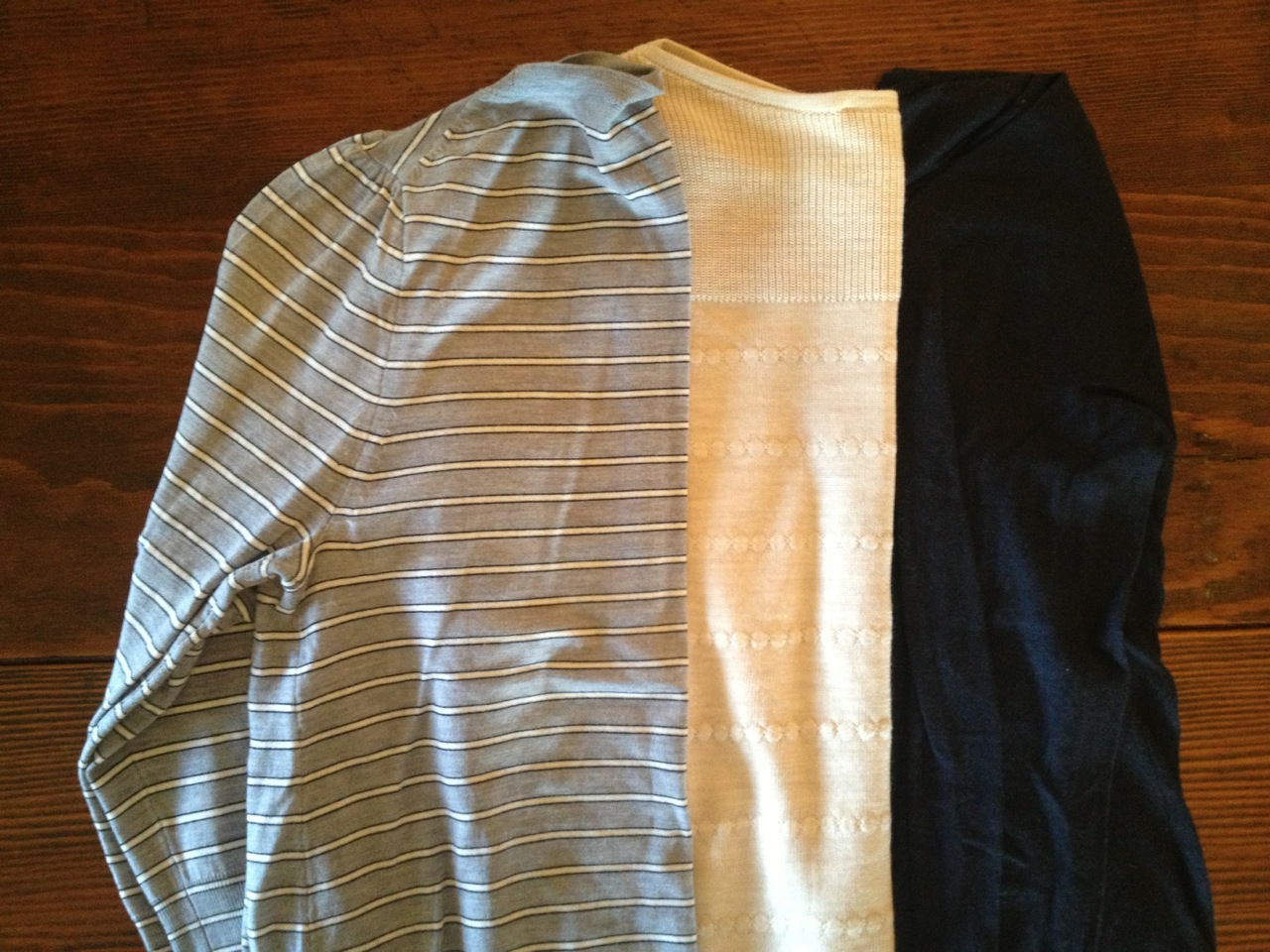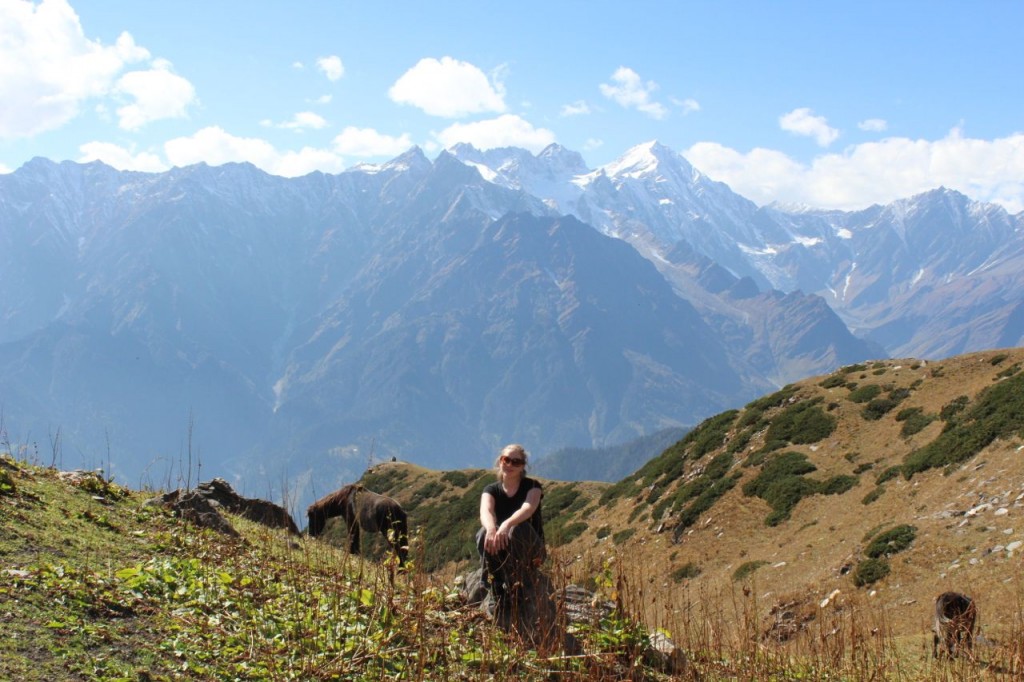So here was my challenge: pack everything I'd need for a month-long, four-season trip into a single suitcase.
I photographed almost everything I put in my bag before I got on the plane. Now that the trip is over, I'm going to post the photos and evaluate the choices I made.
Before I get on with it: I used the website herpackinglist.com a lot while I was packing. It's a great resource & has lots of great tips for traveling light.
My packing rule is this: never pack more than you can carry, and always carry what you pack so you know whether or not you overdid it. If that last bit makes no sense, I mean: don't let some sympathetic person help you with the load. Carry it, feel it, learn from it.
Toiletries. I think I did a pretty good job with this--I cut out everything I wouldn't use daily, and anything that I could do without. No body lotion, for example, even though at home I'm careful to moisturize.
On the other hand, I tried out new products on the trip, and that was a mistake. Herpackinglist.com recommended BB Cream as an all-purpose lotion/moisturizer/sunscreen. I thought it sounded practical and cheap, and in general, I try to avoid packing things that I can't bear to lose. Things get lost and stolen when you travel and you can cut down on the pain in advance by leaving valuables at home.
My usual foundation/moisturizer is pricey, so I ditched it for the cheap stuff. The BB Cream was okay, but not great--I thought it felt a little heavy. The Garnier Fructis was another substitute, which I made for the same reason, and I ended up hating it.
Lesson: it's okay to make substitutions, but test drive thoroughly before leaving home.
Dresses. I took three and should have taken two.
What's worse, in retrospect I'd probably leave out my favorite of the three: the little spaghetti strap dress with the geometric pattern. I could only wear it when it was very warm and relatively informal.
The plain gray dress was more functional, because I could wear it in multiple weather conditions--with tights and a cardigan in the cold, with just a cardigan when it was cool. The black dress worked in all the same situations when the gray print worked, and a few more as well--it looks a little more formal.
Cold weather gear, for hiking. I did not look very fashionable on the trail, but all of this was about right for a summer hike in a cold climate. Pants and long underwear--I ended up using the long underwear as pajama pants. A thermal top and a t-shirt. A long-sleeved shirt, a fleece, a down-filled vest (inherited from my mom--I don't buy anything with down), gloves and a sport bra.
This was all I wore for about two weeks. Piled all together it was pretty bulky, but looking at the picture now--nope, not a thing that I didn't use and use again.
Various cold weather extras. A travel towel (the nubby blue), a scarf (the beige), a sleeping bag/bed liner, basically a person-sized pocket to use when you suspect your hotel's sheets haven't been washed lately, a platypus water bottle, a pair of crampons and rain pants in a little pouch. Sport sunglasses.
Things I didn't use: the rain pants, the crampons.
We didn't need crampons in the Torres del Paine, and when we did a mini trek on the Perito Moreno glacier, the tour company provided heavy-duty crampons. Really poor use of space. The rain pants would have come in handy if there had been more rain, so I'm not sorry I brought them.
The contents of my first aid kit.
I have yet to use burn gel or iodine swabs on a trip. I think, in future, I might cut down on emergency care items. Band-aids and a thermometer? Okay, that's fine. But there's no need to go hog wild unless you're really going to be in the wilderness. That's my new position.
There's no getting around the practical stuff: contact lenses and laundry detergent, razors and feminine hygiene.
One tip I got from herpackinglist.com that worked like a charm was to bring several tiny travel size bottles of saline solution for contact lenses. Yes, more waste, but when you use one up you throw it away instead of carrying around a bottle that stays the same size even as the volume of solution inside of it decreases.
Packing items that you know you won't bring home is great, because it means you have at least a little space for souvenirs.
Two sweaters, one cardigan. This was about right. Pretty plain--also about right.
Yes, lots of tops. I could have cut down here; this is well beyond the bare minimum. But they weren't bulky and they created the illusion of variety so I'm okay with the excess.
The mix here: long sleeved, short sleeved, ratty, neat.
Two pairs of pants and one skirt. The tech pants I wore in Patagonia aren't in this picture, but I only used those while hiking.
Probably could have cut out the skirt. I only wore it a couple of times, and a dress would have served as well. (so maybe the choice ought to have been: take the skirt or the third dress? One or both of them should have been cut).
Warm weather/beach clothes. A swimsuit, a swimsuit cover up, terrycloth shorts, two tank tops and a lacy undershirt.
The things I'd cut? The swimsuit cover up and the lacy undershirt.
The cover-up because I didn't end up doing much swimming, and other items would have served as well.
The lacy undershirt because--like the gray print dress--even though it's a favorite item, it was unnecessary. There's probably room in most bags for a few unnecessary, fun things. This tiny little top takes up no space and caused me no grief. But the goal is to pack smarter every time, and I never had a moment when I thought, "Oh, I'm so glad I brought this, nothing else would do!" with that top. So, the conclusion is to cut it.
It's a travel truism that you should pick clothes for versatility. That's the mistake I made with the lacy top and the dress: not versatile.
I brought three pairs of shoes. Hiking boots were a must. Cheap black flats, and a pair of sandals so old that I threw them away before I came home.
The hiking boots were a bummer. They were huge, which meant I had to wear them on every bus and plane, no matter the weather. I didn't have room to pack them away. But they were necessary.
As for the other two? I picked them because they were disposable, not precious, but they did the job.
Miscellany.
A little purse that I could fold into my suitcase, but pull out to use when out and about.
Kleenex. Because eventually, you learn not to trust toilets to be properly stocked.
Travel guides, my dive log.
Glasses, in case my contact lenses got lost, or for overnight plane flights.
My kindle and cord, my phone cord, a pack of cards.
A warm weather hat, a hat with a sunshade. Never used the hat with the shade--either I should change my habits (probably) or I should leave it at home.
A journal, a tiny nalgene bottle full of fountain pen ink, and gluesticks, to paste items into the journal.
Travel bars for times when I couldn't find any vegetarian food.
A travel alarm.
Valuables. I try to bring as few as possible, because I want to have my valuables on me at all times.
A DSLR camera, an extra lens, an extra battery and charger. The camera is bulky and really, it's a pain to carry around. But I like taking photos so I accept the constant discomfort. I bought a strap cover on Etsy because I hate wearing a brand name across my chest.
Two wallets. I kept them in different bags, so that if one bag were stolen, I'd be able to carry on. Each wallet had cash, a credit card, and a form of ID. I also carried a little coin purse to hold small amounts of cash, so that when I had to pay for something on the street or in a shop, I'd only pull out the coin purse and only display small amounts of cash in public.
Also, I say two wallets but one is my fauxdori--you can see the pen loop that I bought, with a plain black Pelikan inside, and, yes, I travel with a fountain pen and, yes, I find that perfectly practical--I think I refilled it once on the trip, because it's a piston filler and holds a lot of ink.
A bungee cord. I don't know why it's here, but I shouldn't have brought it.
And this is what it all looked like when packed. One medium-sized suitcase that I checked. One camera bag that I had on me at all times, everywhere.
The camera bag has three separate combination locks on it. One is on the strap, so that you can wrap the strap around a pole or a bedframe or whatnot and lock it in. That's handy if you need to sleep in a hostel or on a train. There's a lock on the front pocket, where I kept my fauxdori (which was also a wallet), and another lock on the top flap, which you open to access the camera. I picked this bag because it holds two lenses, and because it soothed my paranoia.
Lastly, the backpack. I don't like to carry backpacks but I needed it for the hike. This was the only luggage I took on the 6 day hike through the Torres del Paine. It was too small, and as a result I had to....(a) leave my kindle in my checked baggage, because I was afraid of crushing it, which meant I had nothing to read on the trip and (b) strap my jacket to the outside of the backpack while I hiked, because there was no room for it inside.
In an ideal world, I would have bought a different daypack. It would be about 30% larger and super snazzy. But I didn't want to buy too much new stuff for the trip--I had to pick and choose, and 'new backpack' didn't make the cut. Anyhow, it worked.
With the suitcase handle in one hand, my backpack on my back, and my camera bag around my shoulder I was mobile but awkward, loaded down. I had no trouble walking, I carried all of this up and down long flights of stairs, unpaved streets, in and out of buses.
That being said, getting from place to place with all this stuff on me was a chore. I did not feel light and fancy free. I felt burdened and vulnerable.
I could have made my life a lot easier by not carrying the camera case. The camera case is what tips a decent bag-and-carry-on duo into a tangle, and it was the camera that made my shoulder ache at the end of a long day. Nothing else I could have cut would have made as great a difference; but there's no chance I would have left the camera behind.



















